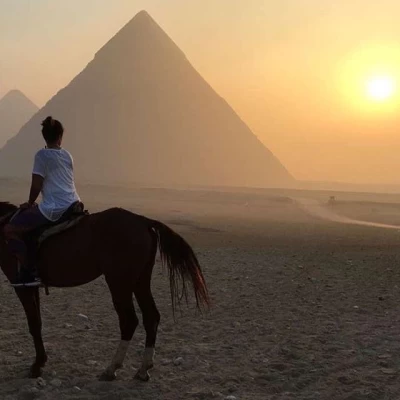
Nectanebo II | Pharaoh | Dynasty XXX
Nectanebo II | Pharaoh | Dynasty XXX
King Nectanebo II was the last Egyptian pharaoh to rule Egypt, and his reign ended with the Persian occupation of Egypt again in 343 BC, before Alexander the Great conquered Egypt in 332 BC, so he was the last Egyptian ruler for about twenty-three centuries.
The first eight years of Nekhtenbo II's reign were free from Persian interference due to family issues in the Persian ruling house and its aftermath. However, in the middle of the fourth century BCE, the new Persian ruler Artaxerxes III succeeded in establishing control over most of the Persian Empire and tried to invade Egypt, but his campaign failed, and because of this, some Greek and Phoenician cities managed to challenge Persian power militarily for some time.
King Nakhtinbo II had returned to the ancient royal traditions and the stability that the gods brought to the land of Egypt, so the king rebuilt and established temples, and the king was presented as being under the protection of the gods, and indeed there is a large stone statue in the Metropolitan Museum in New York City in the United States of America depicting King Nakhtinbo II in a small form at the feet of Lord Horus, the famous Egyptian idol and protector of the sacred Egyptian monarchy, who is depicted in the form of a large-sized falcon.
The Greek mercenary soldiers fought with Egypt and the Persians, and one-fifth of King Nakhtinbo II's army consisted of about twenty thousand Greek soldiers, and King Nakhtinbo II stood with them in the fortress of Farma, which was on the eastern border of Egypt in 343 before the birth of Christ, facing the Persian advance towards his country.
The Egyptians were defeated by the mercenary Greek soldiers hired by the Persians to invade Egypt, and Ferma fell, followed by the strong and fortified delta areas, and Minaf fell after a while, forcing King Nekhtenbo II to flee to Nubia, and Egypt was ruled by the Persians for the second time.
We do not know the fate of King Nekhtenbo II, but an Ushabti statue bearing his name has been found in the Turin Museum in Italy and the place of discovery is unknown, suggesting that he died and was probably buried in the capital city of Sais, and there are other funerary monuments bearing his name, according to the medieval legend called “Alexander's Romance” or ‘Alexander's Story’, that Nekhtenbo II fled to the Macedonian court.
The traditional enemies of the Persians, where he worked as a great Egyptian magician, and there he caught the attention of Queen Olympia, the wife of King Philip II, and became the father of Alexander the Great, which is considered an omen of Alexander's rule over Egypt and his consideration as a descendant of the great pharaohs.














